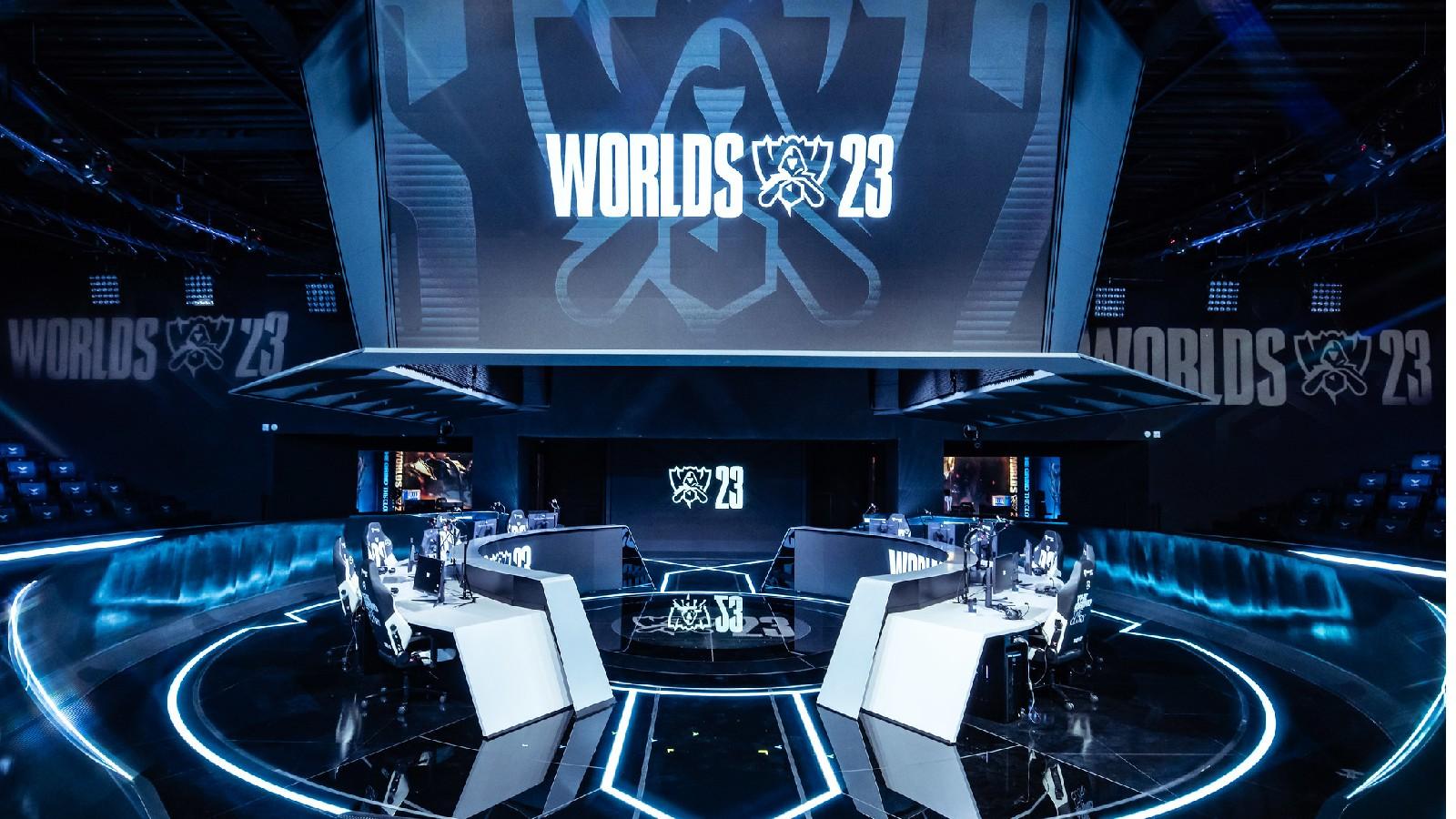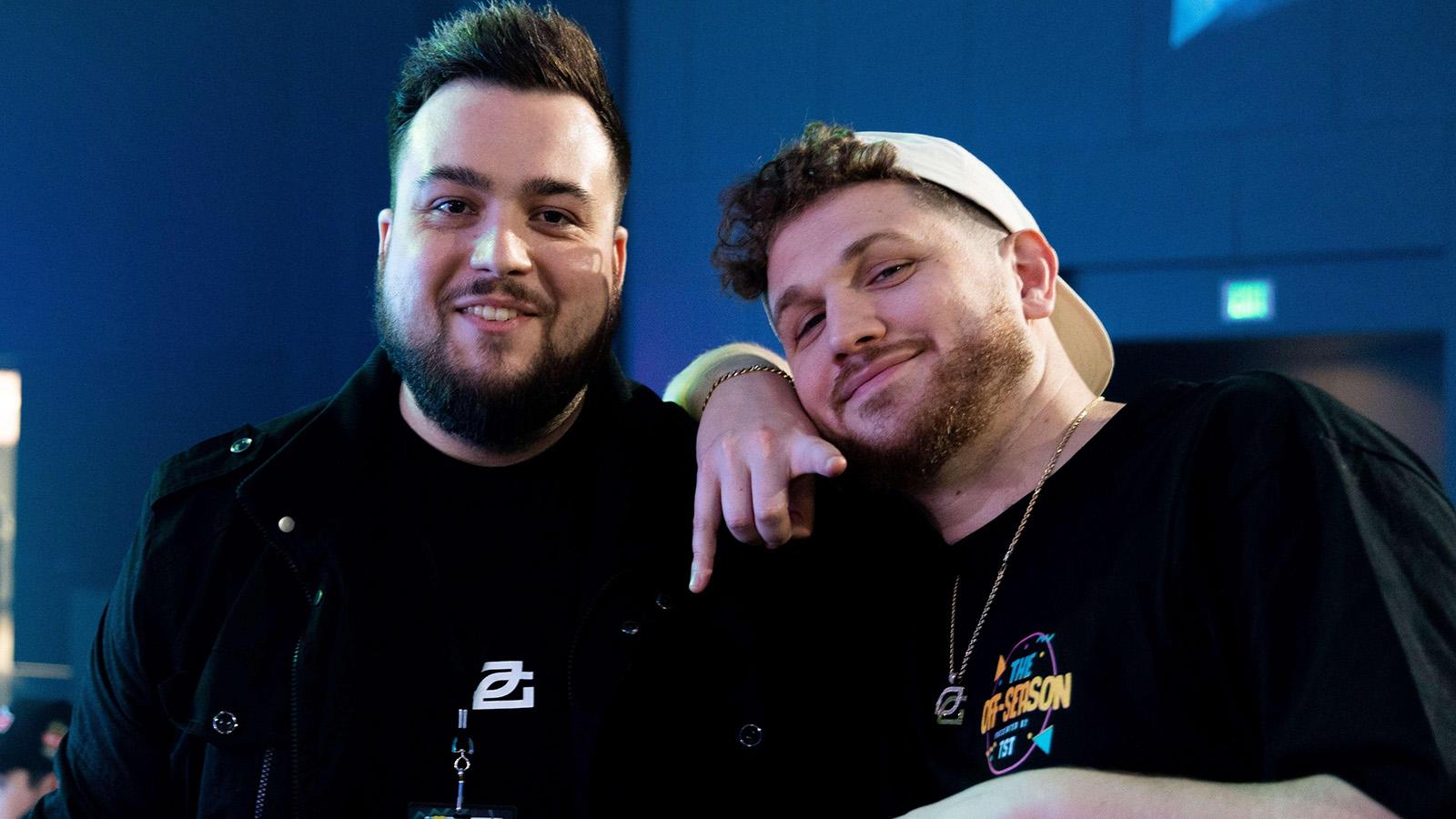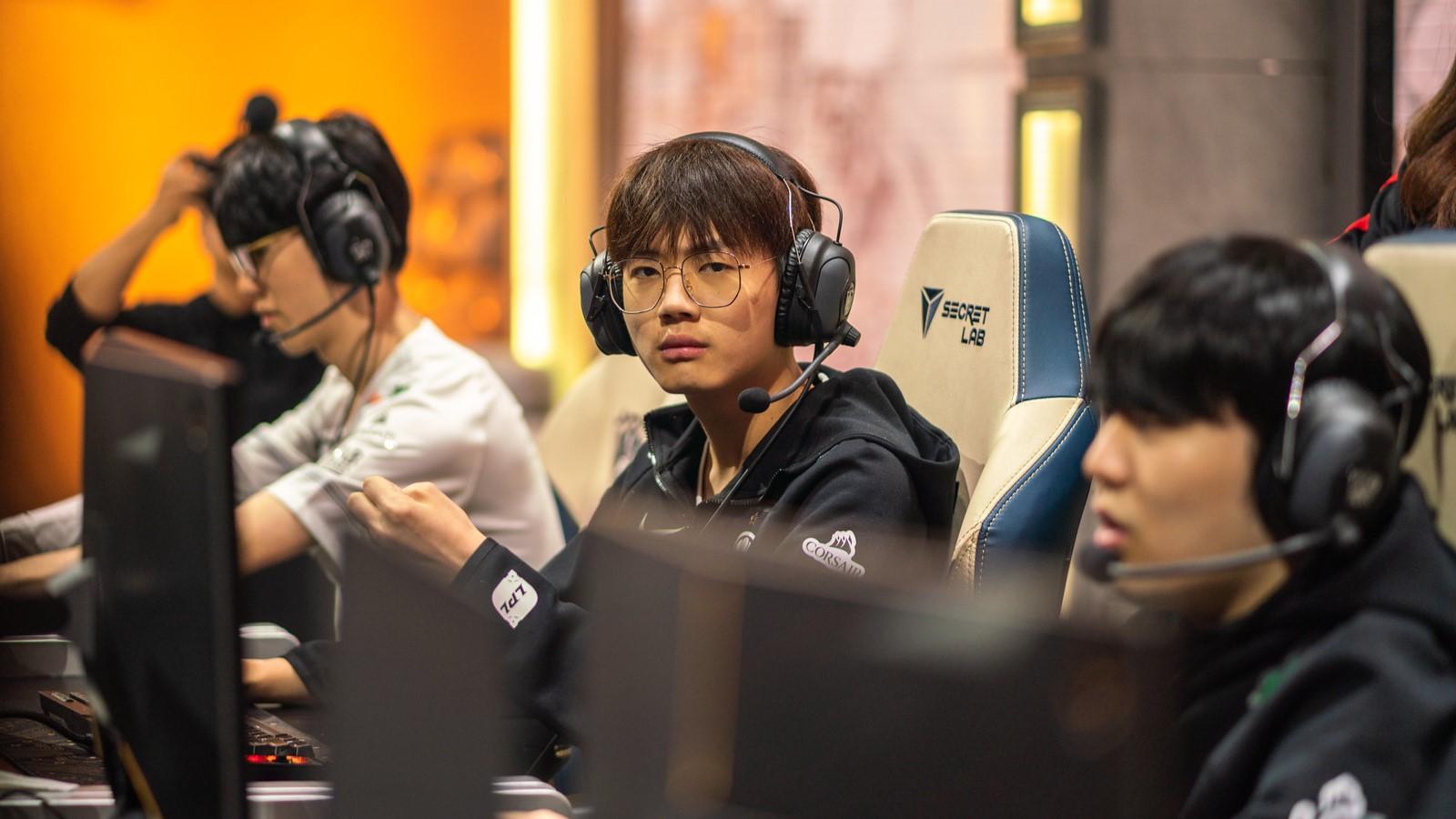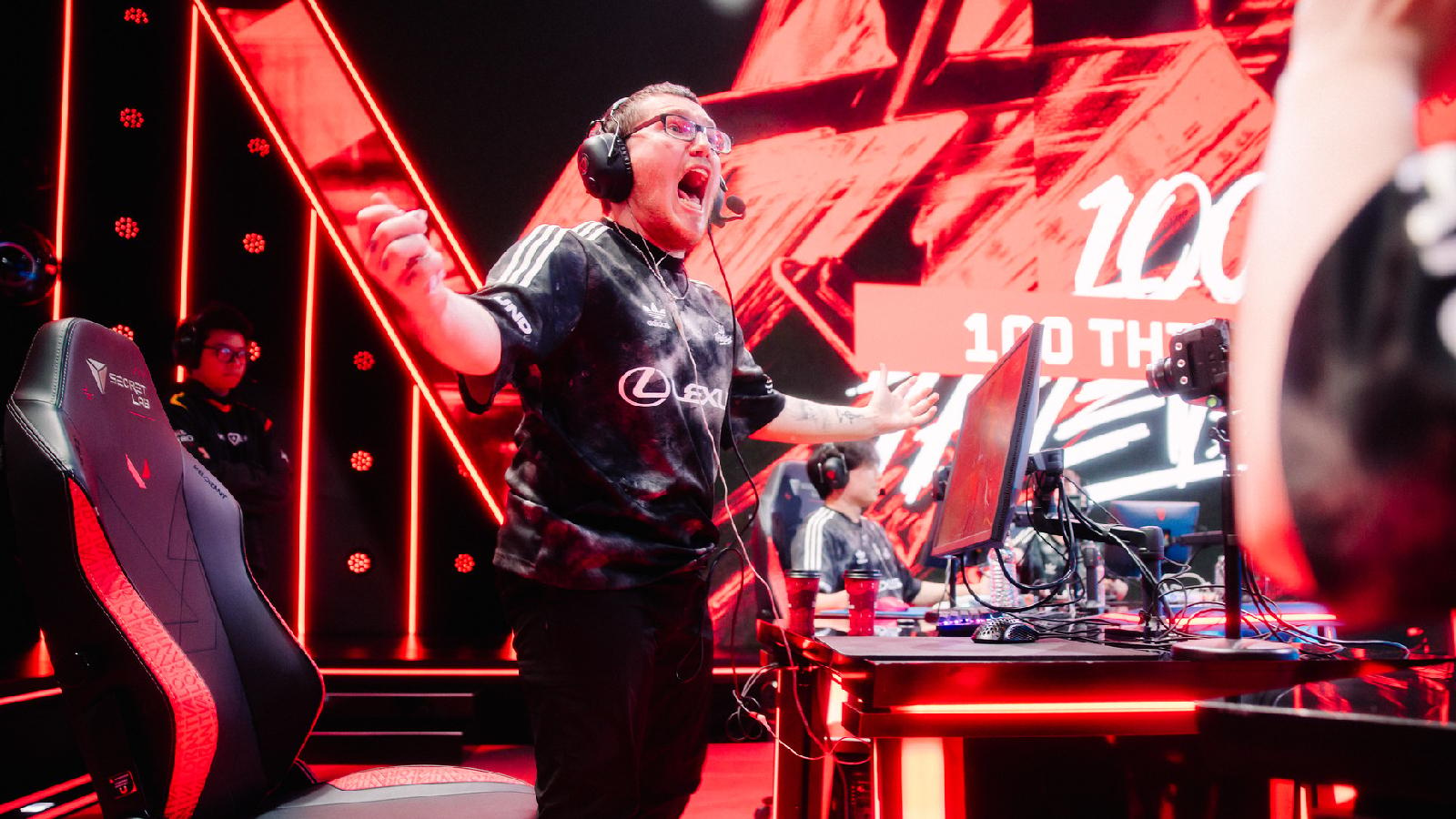Stuchiu’s Standpoint: The CS:GO circuit is as wide open as the Uncertainty Era
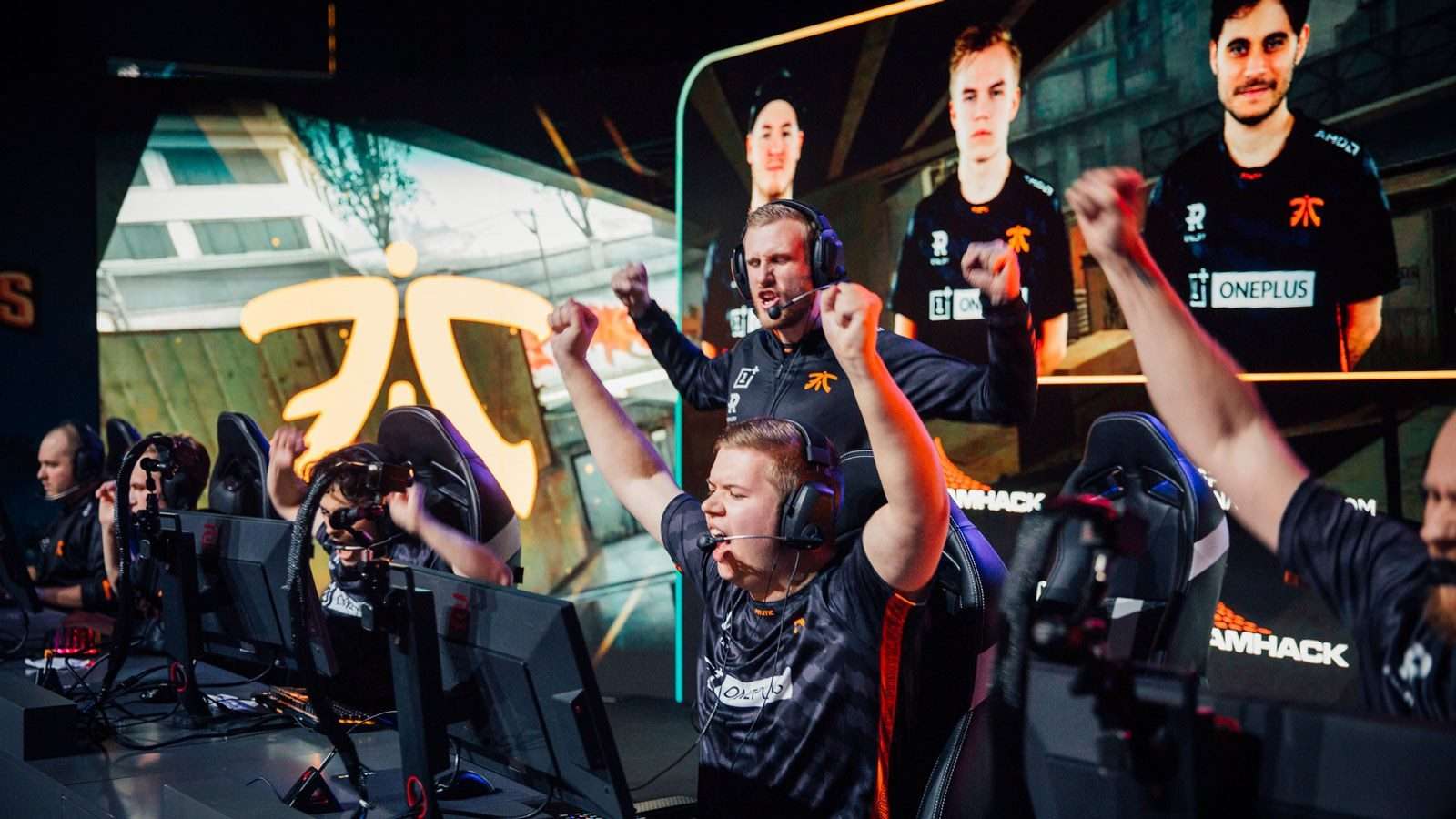
At the end of ESL New York, it looked like the CS:GO scene was headed into another triumvirate-led era. Astralis, Evil Geniuses, and Team Liquid looked like the three best teams in the world. DreamHack Masters crushed that idea for now. EG placed last as Grayhound beat them in a best-of-1 and Mouz beat them in a bo3. Liquid lost to Grayhound in the lower bracket of round 3. Astralis went the farthest as Fnatic eliminated them in the semifinals. Fnatic themselves then went on to win the tournament in magical fashion. Title contention hasn’t been this wide open since the uncertainty era of 2016.
[ad name=”article1″]
The Uncertainty Era
In 2016, SK Gaming (present day MiBR) capped off their era with a Major victory at ESL One Cologne 2016. In the remaining half of the year, CS:GO had 10 LANs: ELEAGUE Season 1, StarLadder-iLeague StarSeries Season 2, DreamHack Bucharest, ESL New York, EPICENTER, ESL Pro League Season 4 Finals, IEM Oakland, DH Winter, ELEAGUE Season 2, Star, and ECS Season 2 Finals. Eight different teams won those 10 events. Among five man line-ups, the only repeat winner was Virtus.Pro, as NiP played with a different 5th at StarLadder and IEM Oakland.
This period was called the Uncertainty Era. Wallabeebeatle coined this term in a Dotesports article he wrote years ago. It is a fitting name as there was no dominant force in the latter half of the year. SK were consistent, but couldn’t win titles. The two teams that could win with regularly were highly inconsistent: Virtus.Pro and Natus Vincere. Na`Vi looked fantastic at their initial debut of ESL New York, but never reached those levels again. Virtus.Pro were hot and cold, either making deep runs or looking subpar.
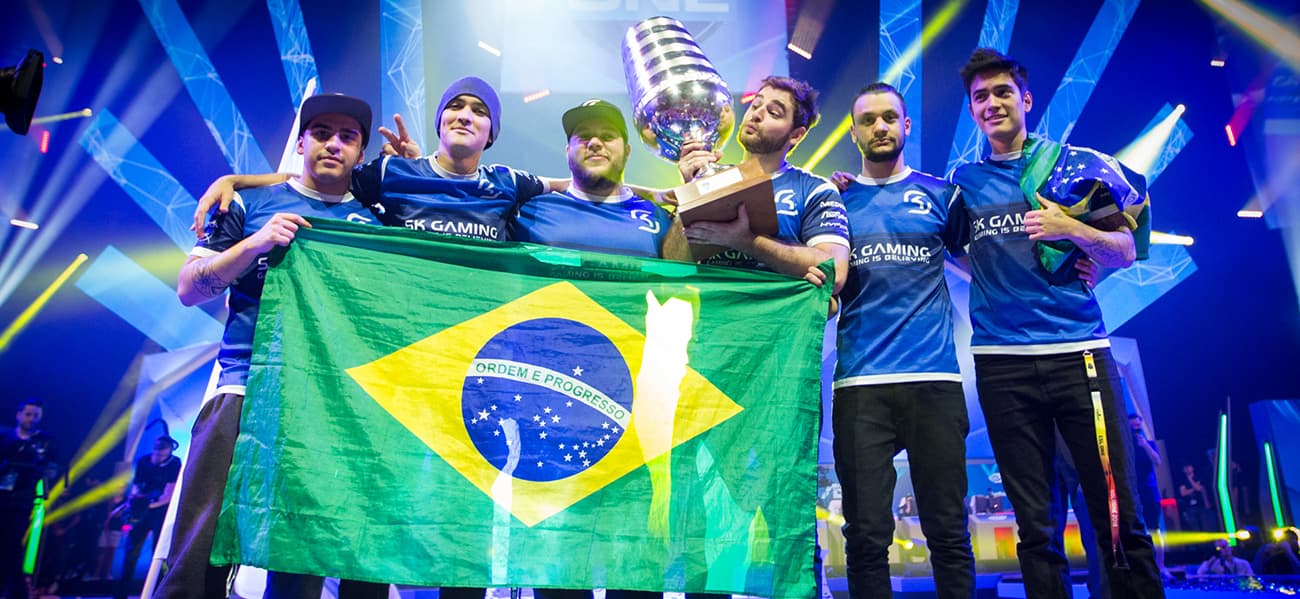 SK Gaming celebrate their major victory
SK Gaming celebrate their major victoryOutside of them, many of the teams were shuffling, rebuilding, or had incomplete rosters. NiP were messing around with stand-ins for their fifth. Cloud9 hadn’t made the harsh roster cuts they needed to make the Major winning lineup. Astralis and OpTic Gaming both made critical roster changes that only paid off towards the end of the year.
The Past and the Present
When I was watching DreamHack Masters Malmo unfold, I couldn’t help but draw comparisons to the past. As each new data point comes to fruition, the story changes and alters. History doesn’t repeat, but it rhymes. There are certain cycles and patterns that seem to repeat themselves.
[ad name=”article3″]
Malmo was the third big LAN event since the player break ended. In that time, we saw Astralis win the StarLadder Berlin Major. At ESL New York, EG routed them in the finals 3-1. Finally, we watched as Fnatic won DreamHack Masters Malmo. At the Berlin Major and ESL New York, the narrative looked similar to the triumvirate of 2017 than the uncertainty era.
- Read more: Stuchiu: A Three Way Race for the Throne
The triumvirate of 2017 denotes the early half of 2017 when there were three teams far ahead of the others: FaZe, SK, and Astralis. Each of the three teams had distinct strengths and styles which created a rock, paper, scissors dynamic. Astralis’ tactics and control style played well into SK. SK’s incredible clutch, teamplay, and mix of skill matched well against FaZe. FaZe’s explosive skill and Finn “karrigan” Andersen’s style of play matched well against Astralis.
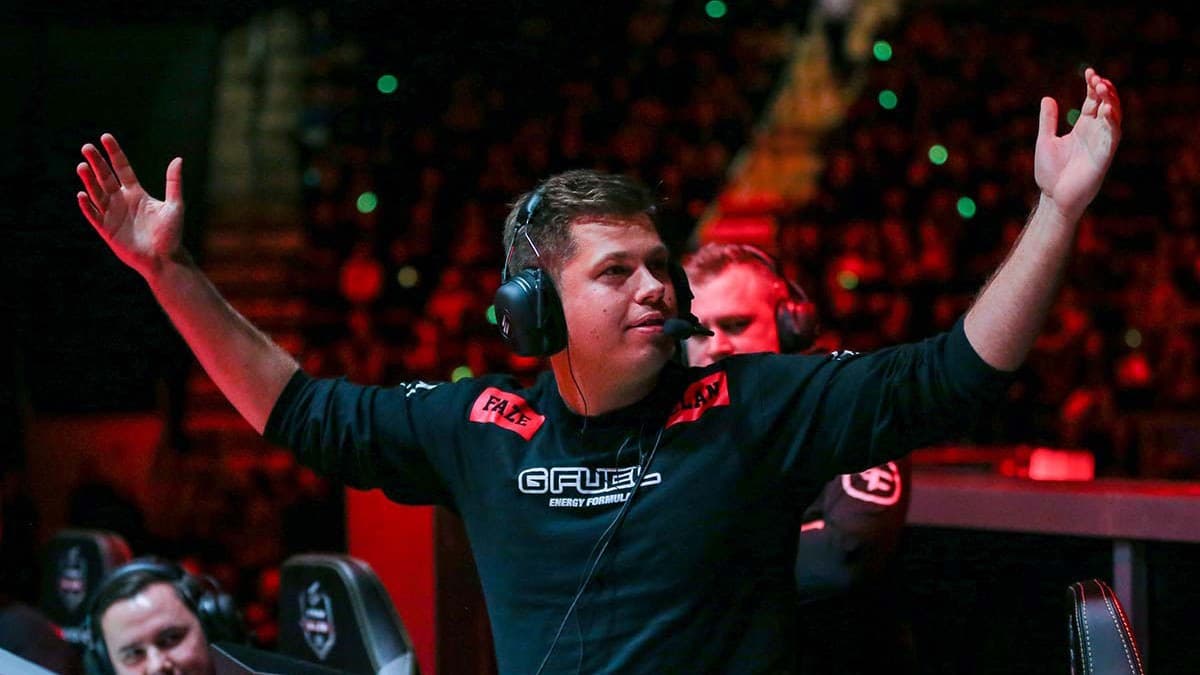 Karrigan during his time with FaZe Clan
Karrigan during his time with FaZe ClanThe matchups between Astralis, EG, and Liquid of 2019 looked like it was going to mirror the same relationship. EG’s firepower, map veto, and style gave them the edge against Astralis. Astralis’ tactics, map pool, and history gave them the psychological advantage against Liquid. The only relationship that was missing was Liquid’s matchup against EG.
I expected this dynamic to play out at DreamHack Malmo, but we got mass upsets instead. It’s worth noting that Malmo started 36 hours after ESL New York ended so Astralis, EG, OpTic, G2, Liquid, and ENCE likely all suffered from varying levels of jet lag. On the flipside of that equation, we got to see the first glimpses of the other rising teams and many of them impressed at DreamHack Malmo. Mouz took out EG in the lower bracket and gave Vitality a close series in the quarterfinals. Fnatic were shaky in the beginning stages of the event before finishing strong by beating Astralis in the semifinals and Vitality in the finals. While Na`Vi lost to Vitality in the semifinals, their firepower and team identity looks promising.
If you include Astralis, EG, and Liquid to that mix, that is seven top teams that could beat each other on any given day. In that sense, the current scene does parallel the uncertainty era in that it’s possible for anyone to win. However there is a key difference; the relative strength of the teams.
[ad name=”article5″]
The Differences between the Uncertainty Era and Now
The uncertainty era was rife with teams that I’d label as having flawed or incomplete rosters. There were only three all-around teams during that time frame: Virtus.Pro, SK, and Astralis.
Virtus.Pro still had the classic lineup of: Janusz “Snax” Pogorzelski, Pawel “byali” Bielinski, Filip “NEO” Kubski, Jaroslaw “pasha” Jarzabkowski, and Wiktor “TaZ” Wojtas. While they veered between hot and cold poles, in terms of overall skill, tactics, and teamplay they were a complete squad with a known identity.
SK still had the Major winning lineup of: Gabriel “FalleN” Toledo, Fernando “fer” Alvaraenga, Marcelo “coldzera” David, Epitacio “TACO” de Melo, and Lincoln “fnx” Lau. While they were no longer evolving and winning titles, they were still a consistently top placing team. Their biggest issue was internal.
As for Astrails, they were still struggling to align karrigan’s vision of the game with the rest of the team and eventually replaced him with Lukas “gla1ve” Rossander. Once gla1ve came into the roster, things started to click.
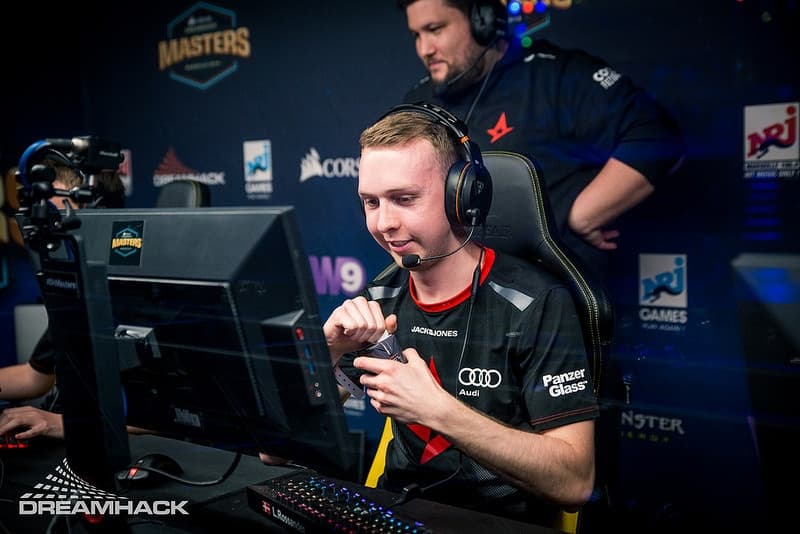 gla1ve emerged as a game-changer for Astralis
gla1ve emerged as a game-changer for AstralisOutside of those three teams, it was hard to point to any of the teams that won during that time period and say they were as balanced or as complete as those three squads. The closest was the OpTic squad which won ELeague Season 2, but we never got a good evaluation of that particular lineup as a team as Peter “stanislaw” Jarguz left the squad in early 2017, so they only ever played three LANs at peak level.
Beyond them, NiP couldn’t figure out who their fifth should be. Na`Vi had brilliant firepower after replacing Danylo “Zeus” Teslenko with Oleksandr “s1mple” Kostyliev, but the Valve ruling hurt them. Na`Vi at the time had planned to have Sergey “starix” Ischuk be the in-game leader from the coaching position, but Valve banned that. As a result, the lineup missed a leader. Cloud9 refused to deal with the fact that Jordan “n0thing” Gilbert, Michael “shroud” Grzesiek, and Tyler “Skadoodle” Latham were giving diminishing returns and needed upgrades. Dignitas had shot up to the top with their victory at EPICENTER, but were still inexperienced at playing at the elite level.
In contrast to that, there are a lot fewer flaws in the makeup of the modern teams. Astralis still has the GOAT lineup and while it’s not in peak condition, it’s still strong in terms of teamplay and tactics. Liquid may be the most skilled lineup ever assembled man-for-man. The addition of stanislaw has elevated EG into contention status as they’ve got new looks on their T-side, more firepower, and Cvetelin “CeRq” Dimitrov looks ready to take the final step into becoming a world dominant AWPer.
Outside of those three there is: Vitality, Fnatic, Na`Vi, and Mouz. In terms of leadership, tactics, rosters, and skill, none of them are flawed. While it’s arguable that they could make even better lineups (Kenny “kennyS” Schrub on Vitality for instance), they are all fairly balanced squads that have a good style for their respective lineups.
While Vitality have swapped Nathan “NBK-” Schmitt for Richard “shox” Papillon, they are still playing a similar style of Counter-Strike. The switch itself has already paid off as they nearly won DreamHack Malmo. What’s interesting about their near-victory is that shox didn’t have to go nuclear, he just had to give a moderate amount of impactful clutches to push Vitality over the edge.
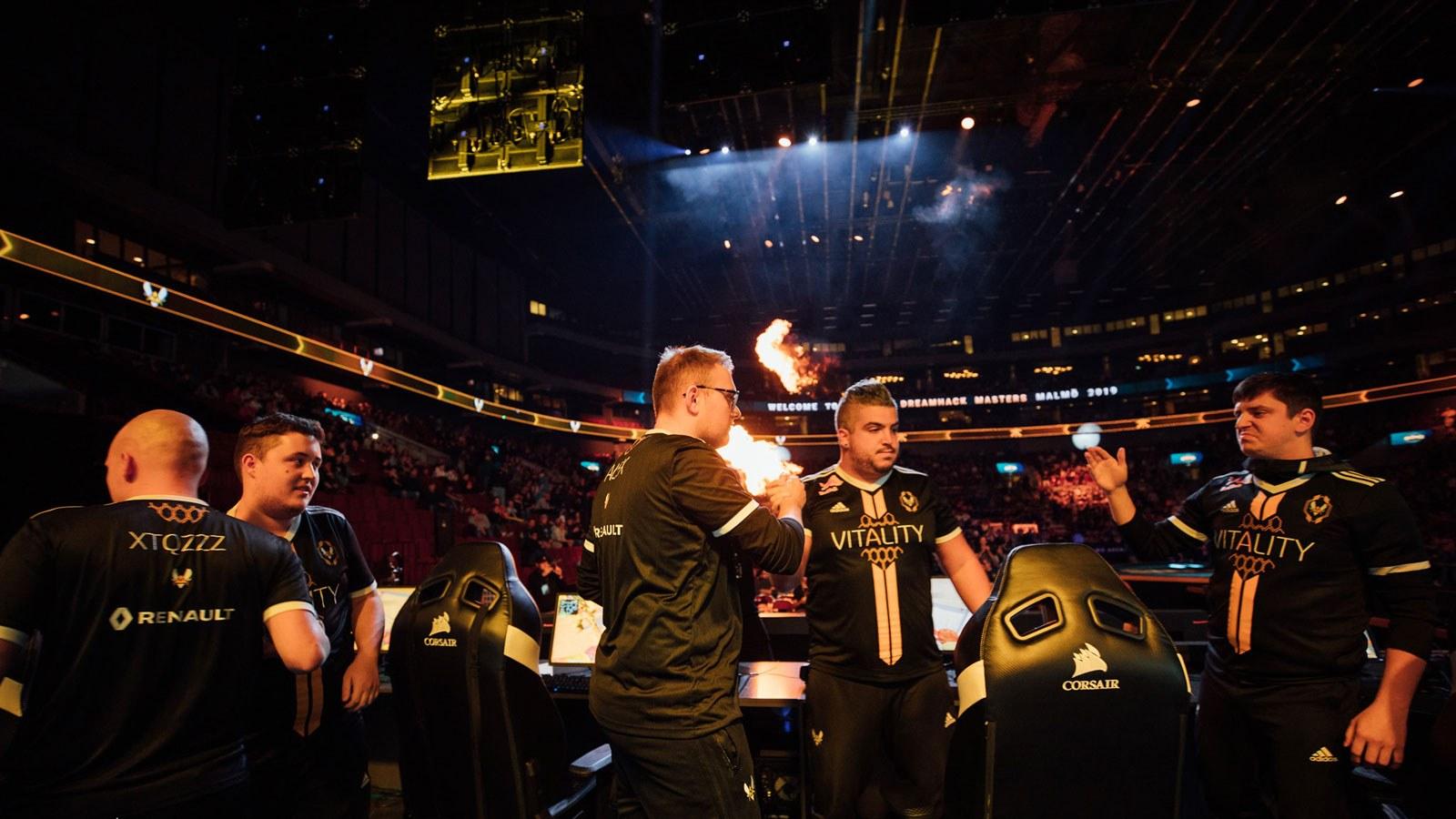 Vitality during their grand finals run at DH Malmo
Vitality during their grand finals run at DH MalmoAs for Fnatic, they’ve hit the reset button and have gone back to a lineup reminiscent of what they had two years ago. Their lineup consists of: Freddy “KRIMZ” Johansson, Jesper “JW” Wecksell, Ludvig “Brollan” Brolin, Robin “flusha” Ronnquist, and Maikil “Golden” Selim. This particular reunion has come at a good time as JW and KRIMZ have found renewed form. JW especially has been making a strong resurgence and alongside KRIMZ and Brollan, has created a strong base of skill that lets Fnatic compete with the top squads. Golden’s loose style seems to make the most of these players and is a good fit for the archetypal Swedish Counter-Strike team.
Na`Vi’s lineup on paper could give EG or Liquid a run for their money in terms of raw firepower. They boast: s1mple, Egor “flamie Vasilev, Denis “electronic” Sharipov, Kirill “Boombl4” Mikhailov, and Ladislav “GuardiaN” Kovacs. Andrey “B1ad3” Gorodenskiy has decided that the best way to use this level of talent is through a loose system. This has made them one of the strongest CT-sided teams at Malmo and if they can get their tactics to the next level, Na`Vi should win titles.
Finally, there is mousesports. They don’t have the results or star power pedigree of the other teams here, but they are on the cusp of breaking into the top five. At Berlin Major they took Liquid to the limit, barely losing to Liquid in two overtime games. At DreamHack Masters Malmo, they could have beaten Vitality in the quarterfinals if not for Shox’s 1v3 on Mirage. Mouz may not have the experience to become a title contender, but they have the ability to upset the best teams in the world.
The Wide Open Circuit
We currently have seven top teams playing Counter-Strike and that number could soon be eight if OG enter the field with the reported Aleksi “Aleksib” Virolainen and NBK lineup. What makes this even more exciting is the timing. From now to the end of the year, we have a massive run of tournaments in the CS:GO calendar. There is StarLadder i-League Season 8, BLAST Copenhagen, IEM Beijing, ECS Season 8 Finals, EPL Season 10 Finals, BLAST Global Finals, and a slew of smaller LANs.
With so much uncertainty and top teams running around, this is one of the most exciting periods to be a CS:GO fan. For teams, this is the perfect stage to reach the greatest heights. No one knows how history will play out. Whether we will enter a parity or another uncertainty era. Perhaps three teams will ascend above the rest as a triumvirate, or perhaps a team will create another dominant period. Whatever the case maybe, the fact that we have so many potential contenders means that records and achievements won during this period will have more meaning because of the increased difficulty. That in turn increases the glory that a team can accrue now and is the perfect place for teams to either establish or increase their legacies in the game.
